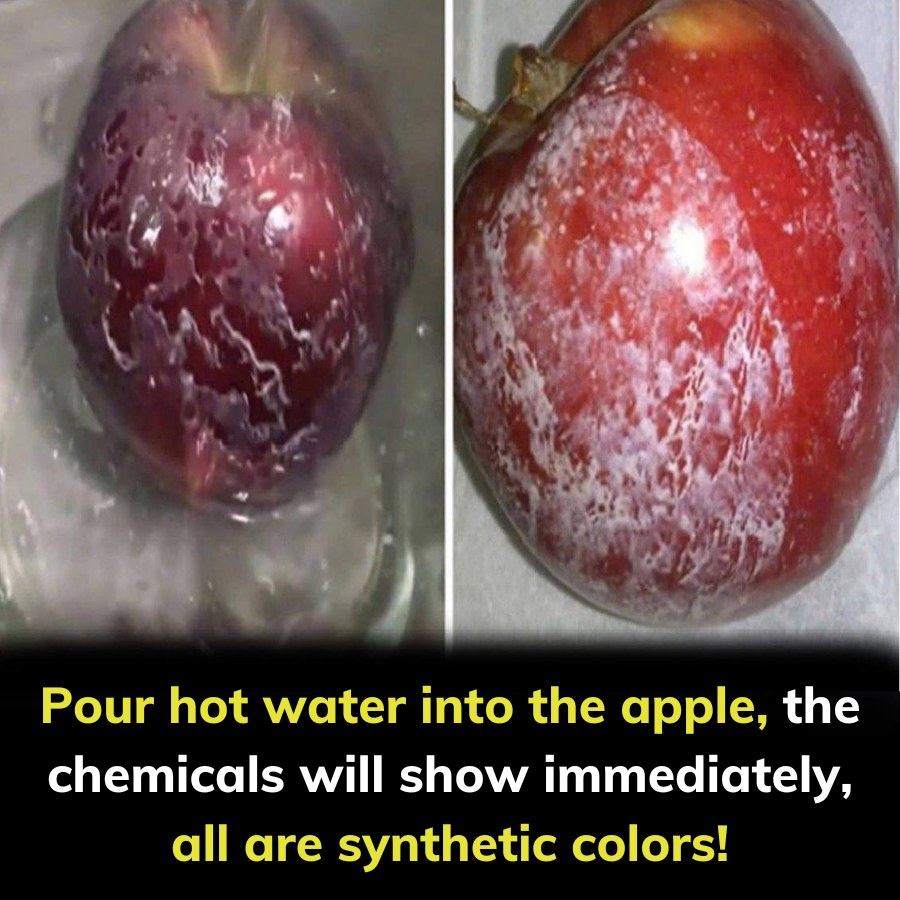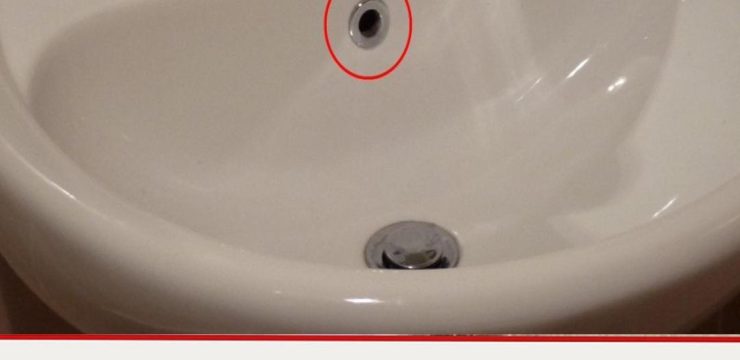Apples are a nutritious and widely consumed fruit, but not all apples are as healthy as they seem. Many are coated with a layer of wax or preservatives to enhance their appearance and extend shelf life. By simply pouring hot water over an apple, you can identify whether it has been treated with harmful substances. Here’s what you need to know about this easy method and how to protect your family from consuming potentially hazardous apples.

Why Pour Hot Water on an Apple?
Pouring hot water over an apple is a quick way to check for the presence of wax or preservatives. Most apples on the market are covered with a waxy layer, and hot water helps reveal whether this wax is natural or artificial.
Here’s how it works:
- When you pour boiling water on an apple, any artificial wax will become visible, often forming a white, chalky layer on the surface.
- This simple test can help you identify apples treated with harmful preservatives or industrial wax, which may pose health risks.
How Does Wax on Apples Affect Health?
Apples naturally have a thin layer of protective wax that helps them retain moisture and stay fresh. However, many apples sold in stores are coated with additional wax to improve their appearance and extend their shelf life.
There are two types of wax commonly used:
- Natural Waxes: These include beeswax, carnauba wax, and resins made from natural ingredients. While safe for consumption, these waxes are expensive and not commonly used by lower-cost producers.
- Artificial Waxes: Many retailers and farmers use cheaper wax coatings mixed with fungicides, preservatives, and artificial dyes to enhance the fruit’s look and longevity. These substances can pose significant health risks, including:
- Memory impairment.
- Weakened immune system.
- Respiratory issues.
- Potential links to cancer, though this remains controversial.
How to Remove Wax from Apples
If you’re unsure whether the wax coating on your apples is natural or artificial, it’s best to remove it before eating. Follow these steps to clean your apples thoroughly:
- Prepare the Cleaning Solution:
- Fill a small bowl with warm water.
- Add 1 tablespoon of baking soda and 1 tablespoon of lemon juice.
- Clean the Apples:
- Place the apples in the mixture and gently roll them to coat their surface.
- Use a soft toothbrush to scrub the skin gently, ensuring you remove as much of the wax as possible.
- Peel Before Eating:
Even after cleaning, it’s a good idea to peel the apple to ensure no traces of wax or preservatives remain on the skin.
Tips for Buying and Storing Apples Safely
To minimize health risks, follow these tips when purchasing and storing apples:
- Buy from Reputable Sources:
Choose apples from trusted supermarkets, branded import stores, or certified organic vendors. Avoid buying from street vendors or sources where the origin is unclear. - Wash Thoroughly Before Eating:
Always wash apples thoroughly before peeling and consuming them. If you’re eating them immediately, soak the peeled slices in a mixture of warm water and lemon juice to prevent browning. - Store Properly:
If you plan to store apples for several days, wrap them in perforated plastic bags and keep them in the refrigerator to maintain freshness. - Be Cautious with Imported Apples:
Imported apples, particularly those from China, often have smooth, shiny skins and are wrapped in foam mesh. Be vigilant for white particles or thin, white layers on the skin, which could indicate preservatives.
The Bottom Line
While apples are a great source of vitamins and nutrients, their safety can be compromised by the use of artificial waxes and preservatives. By using simple methods like pouring hot water or cleaning with a natural solution, you can reduce your risk of consuming harmful substances. Always prioritize buying apples from trusted sources and take the time to clean them thoroughly for your family’s health.





